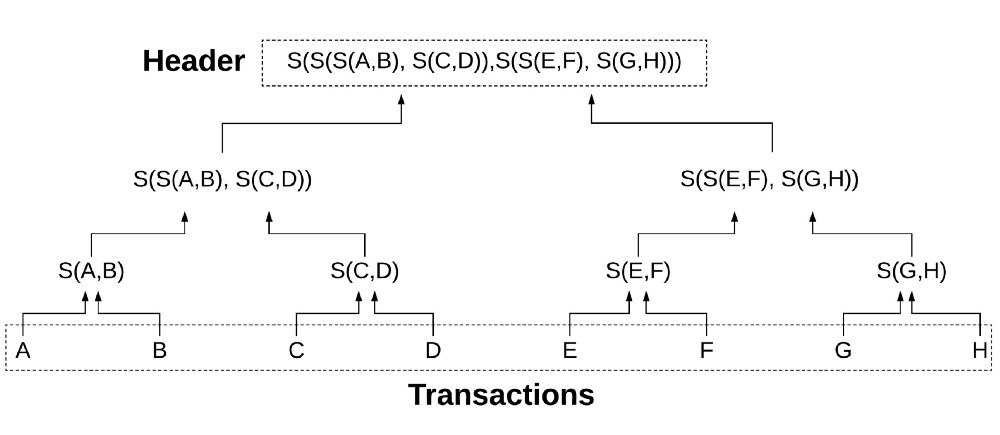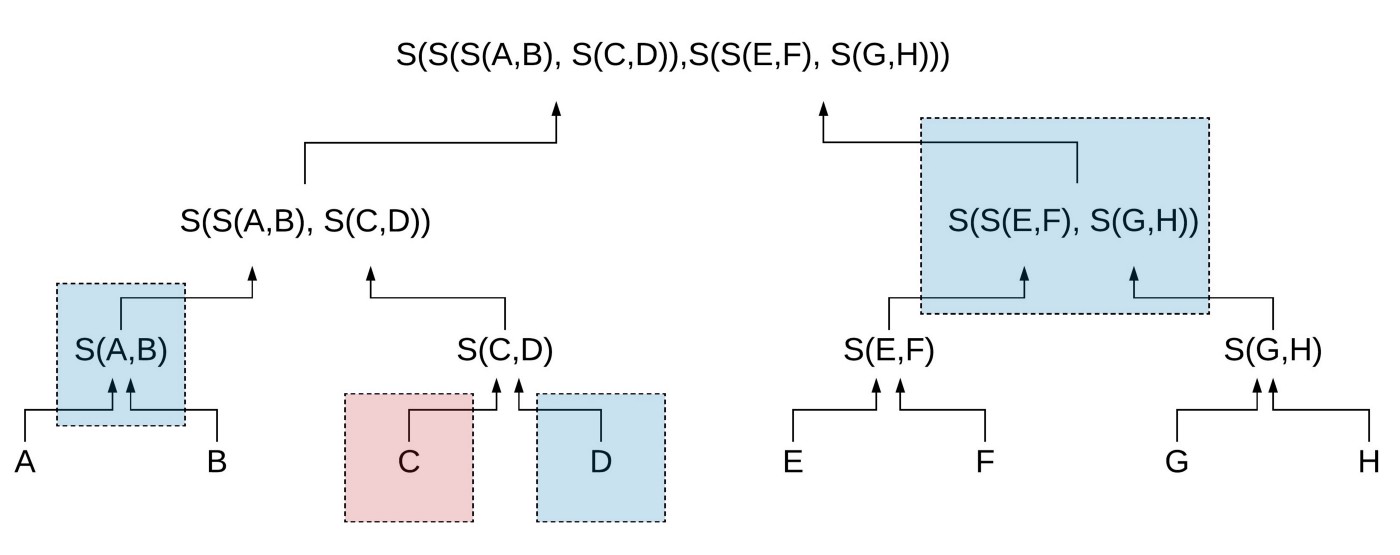Merkle trees are hash-based data structures used to prove the integrity of transaction data stored in the block. For this exercise you may assume that all trees are binary, balanced, and that the number of transactions to be stored are some exponent of two.
 Source: Grid+
Source: Grid+
Above you can see what this tree would look like. The eight transactions in the block (A-H) are lined up in the bottom row. The second row contains four hashes (S(X) = sha3 hash) of the child transactions. The third row contains hashes of the child hashes, and the root contains a hash of the hashes of the hashes of the transactions. Generically, this is how the transaction part of an Ethereum block is laid out and the root here is what we know of as a transaction header (one of the 15 pieces of information that goes into the block header).
The reason we use Merkle trees to store block data (i.e. transactions) is that verification is very efficient. This verification is called a Merkle proof.
Suppose we want to prove that transaction C was indeed in the block that formed the header shown above.
 Source: Grid+
Source: Grid+
In addition to the transaction hash C , we also need D, S(A,B), and S(S(E,F),S(G,H)) to form the proof. The verification itself performs the following steps on the proof:
- Hash C and D to produce S(C,D).
- Hash S(A,B) and S(C,D) to produce S(S(A,B),S(C,D)).
- Hash S(S(A,B),S(C,D)) and S(S(E,F),S(G,H)) to produce the root.
- Check that the root is the same as what has been stored previously.
The efficiency here is that we proved a transaction belonged in a block with only 3 accompanying pieces of information (instead of the 7 other transactions that were stored in the block). This efficiency becomes exponentially more pronounced with larger trees.
It will be your job to implement the Merkle proof functionality and to verify it.
You need only to make changes to merkle_proof.py, please make sure to familiarize yourselves with the layout of the entire directory however. The roles of the other files are as follows:
hash_data_structures.py: contains intermediary object classes that act as nodes in the tree.merkle_tree.py: contains the Merkle Tree implementation; make sure you familiarize yourself with how it works. It takes in a list of transactions as inputs. Transactions are generally in the form of strings in this case, for brevity.test.py: a script to help run all the other tests.test_*.py: testing scripts built on theunittestmodule. Each test ensures the integrity of their respective file.test_sanity.py: tests that highlight the basic use of each data structure. Take a look at this file if you find yourself lost on how they are implemented.utils.py: contains multiple helpful methods.
Use python3 test.py to run all the tests. You may add your own tests and run them with python [filename].py. Make sure to format tests according to the unittest module (take a look at the other files to see examples).
Writing your own tests is not required but highly recommended. All that matters is you pass our internal test cases.